Mäetagused vol. 83
Summary
-
On nature, sacrality, and heritage
-
Folkways and politics of the sacrum of Trakai lakeland
Lina Leparskienė
Folk Narrative Department
Institute of Lithuanian Literature and Folklore
linute.arch@gmail.com
Keywords: Trakai, protected areas, sacrality, genius loci, folk narratives
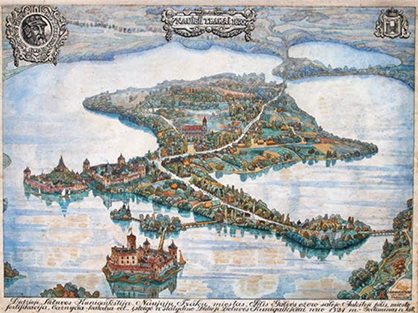
The lakeland of Trakai is a historically, culturally, and ecologically meaningful place in Lithuania, an important realm of memory and symbol of national identity. In 1991 the historical national park of Trakai was established, bringing under its umbrella material and intangible qualities of the cultural landscape and spirit of this place. This article approaches components of the genius loci of Trakai, interpreting this concept through the lenses of the politics of the protected areas in Lithuania, asserting it was closely intertwined with an idea of sacrum, based on the aim to represent regional specifics and ethnic identity of the Lithuanian nation. Based on long-term personal observations of how values and regulations of the historical national park of Trakai evolved and were introduced in the local context in practice, a critical approach is applied concerning the separation of the local community from their decision-making about the symbolic or physical usage of their surroundings. Multiethnicity with the significant Slavic cultural element of Trakai is discussed as one of the reasons explaining why folkways of the local inhabitants were not equally involved in the whole picture of place identity, leaving the human component of the genius loci aside. The analytical line of the article focuses on the contradiction between the peculiarities of the local culture and national ideas, while the empirical presentation of the theme is set forth through the presentation of the four dimensions of sacrum: historical, cultural, ecological, and human.
Sacred natural sites as story-places: The cases of Rambynas Hill in Lithuania
Andrius Kaniava
Junior Researcher
Department of Folk Narrative, Institute of Lithuanian Literature and Folklore
Kaniava.andrius@gmail.com
Keywords: Rambynas Hill, sacred natural sites, phenomenology, story-places
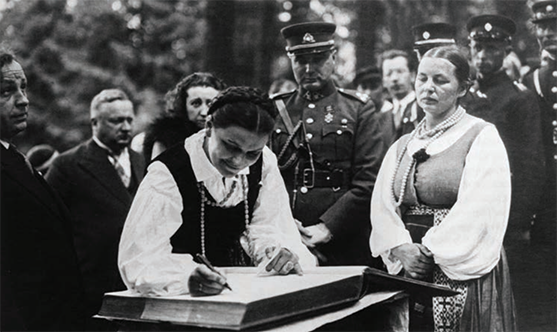
This article presents different cases of Rambynas Hill in south-western Lithuania. The first one discusses Rambynas Hill as a pagan sacred site. Sporadic mentions in written historical sources do not paint a clear picture of the place and of how it was used in pre-Christian times. Nevertheless, early mentions of Rambynas from as early as the 13th century confirm that the place was indeed significant at the time. No high-profile archaeological excavations ever took place at Rambynas and this limits our understanding of the place in the prehistoric context. Unfortunately, the most important part of the hill collapsed into the Nemunas River in the 19th century, which suggests that any future archaeological expeditions would probably be unavailing. Folklore remains the main source for understanding Rambynas’ importance as a sacred site, while some folktales are presumably of pagan origin. The cult stone on top of Rambynas, last seen in the late 19th century, also suggests that the place was a kind of pagan sacred site. However, its origins could not be verified because the stone was destroyed. It is important to note that despite the lack of additional data in some cases, Rambynas Hill is one of the best-documented and best-known sacred sites in Lithuania. The second case of Rambynas Hill demonstrates how the place regained its fame and importance at the beginning of the 20th century, at the time of creating national identity in Lithuania Minor. Rambynas became the pinnacle of the joint historical narrative between the inhabitants of Lithuania Minor and Lithuania Major in order to further include the former to the newly formed independent country. Rambynas also became the centre of summer solstice celebrations that grew larger with every year during the 1920s and 1930s. For these celebrations a local figure, Martynas Jankus, started The Eternal Book of Rambynas, where people wrote down their experiences of the place. This book represents the third case of Rambynas and is comprised of short writings from different people inspired by their immediate experience. It presents the main topics that were important for people visiting Rambynas Hill and also shows how the place was successfully re-storied in the 20th century and regained its fame as a sacred site of now romanticized pre-Christian religion, despite the fact that it had not been practiced for a few hundred years. The Eternal Book of Rambynas reveals a more personal approach, even though still highly influenced by collective ideas. It does not elaborate on each case of personal experience due to the limited scope of the records. The last case presented in this article discusses Rambynas as part of personal lifeworld, revealed in the memories of a local villager Elena Grigolaitytė. Her experiences are recorded in a short book titled Rojaus Kelias, in which the woman summarizes her life in Bitėnai village close to Rambynas Hill. The case of Elena shows how the same place could be presented in a different light when viewed from a personal perspective of everyday life. All the cases presented in the article serve the purpose of showcasing the possibilities of studying sites as story-places. Research of ancient sacred sites in Lithuania is often limited by historical and ethnological data, and researchers try to include these places in pre-Christian narratives. Due to phenomenological approach, story-places allow to temporarily suspend these values and discuss these places as part of human experience and everyday life. However, the phenomenological approach works best as a part of complex research. Historical facts and written sources about the hill introduce Rambynas as a part of pre-Christian sacred site, probably important during prehistoric times and later in the Grand Duchy of Lithuania. Investigation carried out by the 19th and early 20th-century press, written memories, historic documents and other data introduce the modern restoration of Rambynas and how the hill functioned as a cultural and even political centre of Lithuania Minor. Lastly, by analysing records in The Eternal Book of Rambynas, folk stories about the place and personal memories, it is possible to understand how people were experiencing the place. This approach paints a complex picture of the place and, most importantly, does not automatically reject modern stories as irrelevant.
The role of place-lore in environmental conflicts discourse: The case of Paluküla sacred hill in Estonia
Lona Päll
Junior Research Fellow
Estonian Folklore Archives, Estonian Literary Museum
lona.pall@kirmus.ee
Keywords: cultural heritage, ecosemiotics, environmental conflicts, place-lore, sacred natural sites
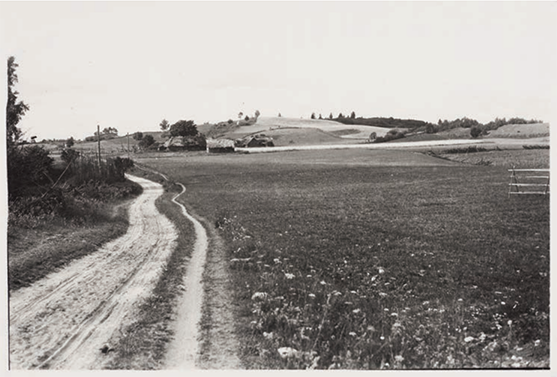
This article is a critical study of how local place-related narratives, i.e., place-lore, is integrated into environmental discussions. Place-lore reflects the cultural and ecological dimensions of collective environmental experience; for example, what kind of species grow in a specific place, what are the characteristics of the landscape, what kind of activities and usages certain environment allows, etc. Place-lore is culturally and ecologically highly contextual and refers to the environment it represents. However, when including these kinds of contextual and environmental-related narratives in conflict communication, the narratives may become disconnected or decontextualised from the environment represented. Combining the frameworks of ecosemiotics, environmental communication studies, and place-lore research, the article explores how a new storytelling context, ideological choices, and the logic of conflict communication influence the interpretation of place-lore. The theory is applied to an empirical examination of the public discussion of Paluküla sacred hill in central Estonia. The conflict surrounding the plan to build a ski resort near Paluküla sacred hill is one of the longest place-centred environmental conflicts in contemporary Estonia. A larger opposition broke out in 2004 and discussions are still ongoing. Moreover, Paluküla is a good model conflict for studying the role of place-lore in similar conflicts. Since the beginning of the conflict, it has been characteristic of the debate to involve references to and discussions of folklore, and also to question, compare, and use specific place-related vernacular knowledge and narratives as part of the argumentation. Tracking references to the previous place-lore about Paluküla Hill in the media coverage of the conflict allows a demonstration of how the contextuality and referentiality towards an extra-narrative environment that are originally present in place-lore are often overlooked or ignored in conflict discourse. When part of practices, activities, or ways of relating with the place are ignored or diminished in the discussion, the possible semiotic relationships with the environment also become neglected. This, in turn, leads to socially and ecologically disconnected discussion.
Natural sacred places in Karksi parish
Laura Mäemets
Researcher
NGO Estonian Local Heritage Center
l.maemets@gmail.com
Keywords: historic sacred natural place, Karksi parish, place lore, Pell, folk religion, Vanapagan

This article gives a brief review about some of the most characteristic sacred natural places in Karksi parish based on place lore. These are: cemeteries/barrows, sandstone outcrops (so-called “Hells”) and places connected with Pell – a being of folk belief in Karksi parish (Mulgimaa). Vanapagan (“The Old Heathen”, also known as “The Old Devil”) can be seen as very popular supernatural being in Karksi’s oral tradition, which has historically been connected with many places in Karksi. Karksi parish can be seen as a centre of Pell tradition as most accounts of belief and customs that are referring to vernacular cult originate from Karksi. Unfortunately, most of its special sacrificial sites have been destroyed – like many other sacred places in Karksi. Both landscape and folklore can be seen as dynamic phenomenons connected and dependent on each other. Changes in landscape make changes in place lore. Natural sacred places preserve the values of the present and the past. They are essential phenomenons from the perspectives of historical memory, folklore, popular religion, and archaeology. Oral tradition can be significant and, even more, primary prerequisite considering protection of and both – physical and cultural – continuity of these kind of places.
Natural holy places of regional meaning in the south-eastern corner of Estonia
Heiki Valk
Professor of Archaeology
Institute of History and Archaeology, University of Tartu
heiki.valk@ut.ee
Keywords: natural holy places, border areas, peripheries, holidays, gatherings, Setomaa, popular Orthodoxy, Võrumaa, syncretism
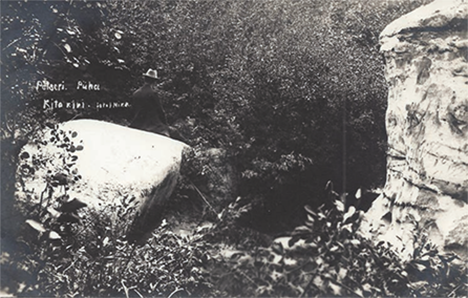
Differently from most of Estonia, in the south-easternmost peripheries of the country – in the western border areas of Setomaa, as well as in the eastern and southern borderlands of Võrumaa – it is possible to distinguish sacred sites of regional meaning, i.e. those where popular religious assemblies related to offering took place on holidays. In the Orthodox Seto culture area where medieval way of life survived until the 1920s, such sites are represented by the sacral complex of Miikse (offering stone, healing stream, cemetery hill, formerly also sacred oak and spring), St Anne’s stone (Annekivi) in Pelsi and Päevapööramise mägi (‘The Hill Where the Sun Turns’) in Hinniala village. Two major Orthodox religious centres of Setomaa have been founded on pre-Christian sacred sites. The church of Saatse was preceded by a sacred pine tree. On the site of the famous monastery of Pechory (Petseri) there was probably a large sacral complex of a sacred hill with a grove and cave, as well as a sacred spring and offering stone. The site of religious assemblies called Bohomola mägi (‘The hill of praying to God’) was located somewhere on the forested borderlands of the Lutheran province of Livonia and the Orthodox province of Pskov, being attended by peasants from both regions. In Lutheran areas where the modernization of culture started since the 1850s and 1860s already, folkloric evidence is fragmentary and has preserved more poorly. There sites of popular assemblies related to offering on holidays are known from Viitina Vana-mõisa, Villa, Viitka, Paidra, Kuutsi and Linte, and a sacred site of central importance was located also on God’s hill of Vana-Laitsna (presently Vēclaicene municipality in Latvia). Most of these the sites lie in the extreme peripheries of medieval parishes – the churches of Räpina, Vastseliina and Hargla were founded only in the 17th century. The hinterlands of regional holiday assemblies probably correspond to regional identity units based of village groups called “corners” (nulk, kolk). Judging by the location of regional assembly sites of central meaning, their influence radius stretched until 6–10 kilometres. However, the system was not of symmetric character: some sites evidently had larger hinterlands than others and the hinterlands may also have overlapped. The religious gatherings were often related to the solstices in the natural calendar or church holidays replacing them. Existing data give evidence of the intertwining of pre-Christian and Christian elements, especially in the Orthodox areas. In some cases the assembly tradition at sacred natural site has been transformed into local church holidays on the name days of the sanctuary. The strong and long-term preservation of tradition in some holy places of Setomaa results from their association with Christianity and pilgrimages inherent in popular Orthodoxy.
Holy groves on water’s edge. Imagery of heritage and landscape in natural holy places
Mari-Ann Remmel
Research Fellow
Estonian Folklore Archives, Estonian Literary Museum
mari-ann.remmel@folklore.ee
Keywords: holy places, holy groves, nature, environment, waterbodies, water, place lore, placenames
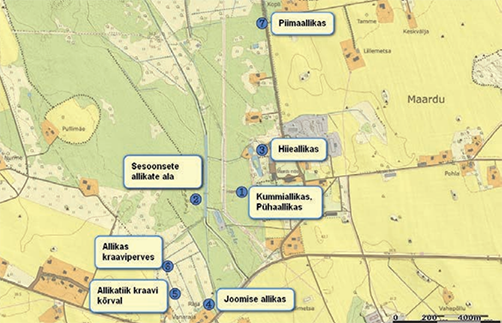
In addition to religious content layers, the word hiis (holy grove) seems to express also certain features of a natural landscape. The article discusses the issues concerned with the location of hiis areas as well as their meaning. There are signs of links between ‘holy’ and ‘hiis’ that can be traced in the toponymy observed in both lore and maps, although it is not always that place lore or placenames have survived in written form until today. The main emphasis in the article is placed on the water element related to holy groves, waterbodies and springs as well as wetlands. Often the holy grove is situated at a watershed or headspring, next to springs, the mouth of a river or a stream, a (former) larger waterbody or karst area. Water connects many places, and holy places can often be found in the marginal areas or junctions of waterbodies. In the case of water and presumably also holy places, place lore seems to consider as essential the ability to move in different ways and change the shape – this is reflected, for example, in legends about travelling nature objects as indicators of holiness. On occasion, the hiis areas mark natural reservoirs of clean groundwater; this is essential to acknowledge as the issue of water still occupies a crucial role among other environmental problems. So the stereotype of hiis as a holy grove, so-called Taara oak grove, embodies remarkably broader possibilities for interpreting the holiness of places in today’s context, for valuing these places and protecting them both culturally and environmentally.
State of inventory and protection of Estonian natural sacred sites in 2022
Pikne Kama (PhD)
Advisor of Sacred Natural Sites
National Heritage Board
Keywords: sacred natural sites, heritage protection, inventory of sacred natural sites, place heritage, landscape
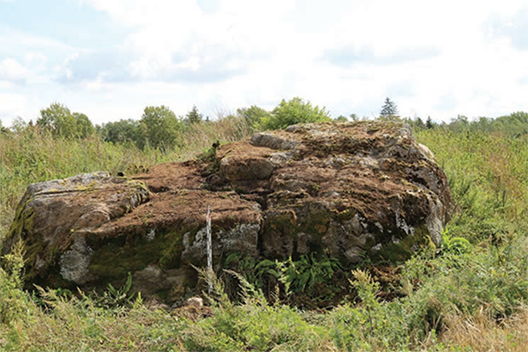
The article gives a short overview about the progress in the inventory of natural sacred sites in Estonia and describes developments in the protection of these sites. Inventory of natural sacred sites means locating and detailed description of holy sites in nature. Inventory begins in archives where all the information about the areas of sacred natural sites is searched and combined. There are plenty of folklore notes about, for example, offering stones, holy groves or springs with healing water, but often the exact location and their state is unknown. The second phase of inventory is fieldwork, where sacred sites are being searched in landscape – and if this is successful, are described and the borders of a site are determined. Many sacred sites described in archive texts unfortunately have not survived due to natural causes or human activity. Important is the help and knowledge of local people, who may pass on information about sacred sites in the area and can help with finding them. By the beginning of 2022 approximately half of Estonia’s territory had been inventoried and this work still continues. Based on the reports, it has been suggested to take 193 sites under state protection. In 2019 a new type of cultural monuments was established in the Heritage Conservation Act – “historical natural sacred site”. Previously these sites were protected as archaeological monuments although sacred sites may not contain any archaeological finds. Currently there are 557 natural sacred sites under heritage protection; in addition, around 90 sacred sites are under nature protection. Recently 15 cross-tree forests and one offering site have been taken under state protection. Definitely there is a long way to go, but having an overview of all Estonian sacred sites on the basis of inventories gives an opportunity to apply state production to the sites that are most valuable or in most danger.
Euphemisms on the example of incantations: Incantations marking relationships between animals and humans
Mare Kõiva
Leading Research Fellow
Department of Folkloristics, Estonian Literary Museum
mare.koiva@folklore.ee
Keywords: euphemism, dysphemism, incantation, ritual, raven spell, taboo, wolf spell
The use of euphemisms is a characteristic of everyday language use today. However, substitute names and euphemisms were widely used in incantations, where euphemisms were tightly interwoven with taboos. In incantations euphemisms are used in various situations: healing the sick, coping with animals and natural phenomena, creating social relationships; coping with core rituals of human life (primarily birth and death); retaliating for theft, murder, and infidelity; promoting one’s work. Euphemisms represent an important pole in the use of verbal magic, and they are different from references to dysphemisms, that is, using vituperation, cursing, profanity or hexing to cut off contact or to achieve one’s goal. This article discusses general principles for the use of euphemisms and examines which euphemisms are used in which functions, using examples of certain belief rituals and values (fishing), symbolic animals (the wolf and the raven) and cockroaches. The results demonstrate that there is no direct appeal in 11% of texts concerned with wolf words, in 10.9% of texts about ravens, and 58% of texts about cockroaches; and euphemisms are used in 66% of texts concerned with the wolf, in 19,5% of texts about the raven, and 32,2% of texts about cockroaches, whereas dysphemisms are used in 32% of texts about the raven and in 3% of texts about cockroaches.
Landscapes of loneliness in the works of Milan Kundera, Bohumil Hrabal, and Mati Unt
Emma Lotta Lõhmus
Student of semiotics and cultural theory
University of Tartu
emmalottalohmus@gmail.com
Keywords: emotionality, Bohumil Hrabal, literary analysis, Milan Kundera, Mati Unt, comparison, loneliness
The feeling of loneliness, the topicality of which is gradually increasing in time, requires more and more different approaches for understanding it. Fiction is one of the possible ways to untangle this feeling in a versatile, poetic manner. The writer Milan Kundera in his novel “The Unbearable Lightness of Being”, Bohumil Hrabal in his story “Too Loud a Solitude”, and Mati Unt in his novel “Autumn Ball” have discussed loneliness from different angles, which, put together, enable us to build up a broad picture of this controversial feeling. As the research method, close reading and text analysis were used. The article introduces the psychological concept of loneliness and its types and analyses the literary works based on American philosopher Rubin Gotesky’s classification of loneliness. The article aims to find out what types of loneliness are discussed in the books and in what way they are manifested. All the books analysed in the article present situations and trains of thoughts in which the presence of loneliness is clearly perceivable. However, the border between the different types of loneliness is somewhat blurred. All these works include situations in which both forced and existential loneliness are present. There are also cases of intertwining physical and voluntary loneliness, but these are not the only combinations. Kundera’s “The Unbearable Lightness of Being” presents the greatest number of philosophical ideas related to loneliness; in Hrabal’s story “Too Loud a Solitude” successive abandonments in human relationships can clearly be noticed, and in Unt’s “Autumn Ball” the urban space bursting with existential loneliness enforces itself at the very beginning, casting a shadow on all the characters and their performance. Each of these works refers to loneliness both in a positive and negative key and the characters are often controversial.
News in brief
Ülo Valk 60. Master of balance
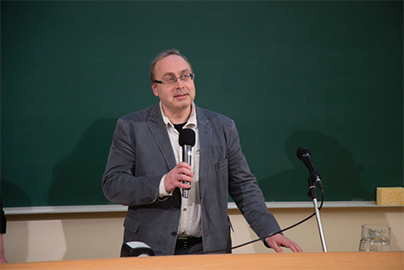
Tiina Sepp congratulates, on behalf of colleagues, Ülo Valk, professor of Estonian and comparative folklore at the Institute of Cultural Research of the University of Tartu, editor-in-chief of the journal Numen: International Review for the History of Religions, who has been president of the International Society of Folk Narrative Research (ISFNR) and member of several other societies and associations, as well as author and editor of numerous articles and publications.
Annual conference of the Centre of Excellence in Estonian Studies, “Subjectivity and Intersubjectivity in Language and Culture” Piret Voolaid writes about the annual conference of the Centre of Excellence in Estonian Studies, which took place on 12–13 May at the Estonian Literary Museum and the University of Tartu.
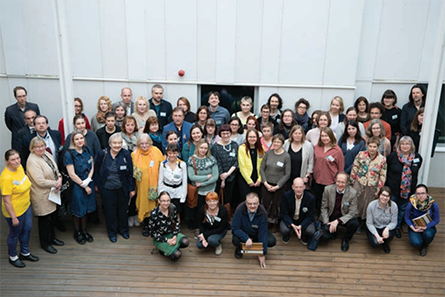
The spring school examined the role of senses in culture
Reet Hiiemäe provides an overview of the interdisciplinary international spring school “Dialogues with the Senses”, organized on the initiative of the Estonian Literary Museum for the doctoral students of the humanities on 26–27 May.
Preliminary results of the Estonian diaspora’s school lore competition
Piret Voolaid and Piret Noorhani give an overview of the school lore competition organized in the Canadian Estonian diaspora community by the Estonian Literary Museum and the Estonian Museum Canada (VEMU) in Toronto.
Six prizes for outstanding papers were awarded by the Young Researchers of Culture Conference
Anastasiya Fiadotava speaks about the conference that took place on 19–20 April 2022.
The monumental work “Eesti kõnekäänud III” is out
Agnes Neier gives a brief introduction to the source publication “Estonian Proverbs III: Index”, compiled by Asta Õim, from the series of the Estonian Literary Museum, “Monumenta Estoniae Antiquae”.
Accessions of the Estonian Folklore Archives in 2021
Olga Ivaškevitš, Risto Järv, Kadri Tamm and Astrid Tuisk give an overview of the activity of the archives in 2021 and the laureates of the President’s Folklore Award.
Calendar
A brief summary of the events of Estonian folklorists from April to July 2022.
Kristel Kivari
Research Fellow
Department of Estonian and Comparative Folklore
University of Tartu
kristel.kivari@ut.ee
Compiler’s introduction to the special issue of the journal Mäetagused, dedicated to natural holy places, and related to the research cooperation project EMP340, “Re-storied sites and routes as inclusive spaces and places: Shared imaginations and multi-layered heritage”, funded by the EEA Financial Mechanism Baltic Research Programme.